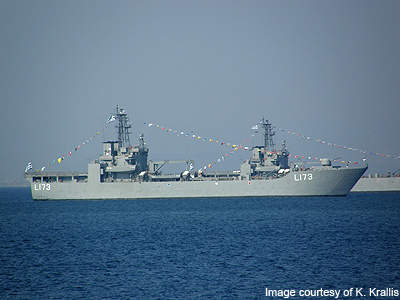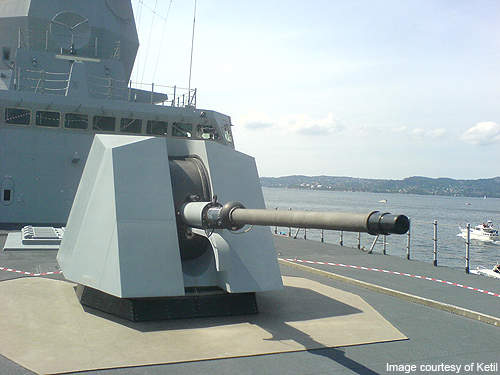The Jason Class LSTs (tank landing ships) were built by Elefsis Shipyard for the Hellenic Navy. The LSTs operate as the primary amphibious warfare vehicles along with the Zubr class air-cushioned landing craft. Five ships were commissioned into the Navy during 1994-2000 as a replacement to the LST 1-511 tank landing ships.
The Hellenic Navy signed a contract with Elefsis Shipyard for the construction of five LSTs in May 1986. The keel for the first vessel, HS Chios (L173), was laid down in April 1987. It was launched in December 1988 and commissioned in May 1996. The second vessel, HS Samos (L174), was laid down in September 1987, launched in April 1989 and commissioned in May 1994.
Construction of all the ships was originally scheduled to be completed by September 1990. However, all the vessels, in particular the last three, were delayed due to a financial crisis faced by the shipyard. Privitisation of the shipyard in October 1997 resulted in steady progress of the construction. A sixth ship was added to the programme in 2000, but cancelled before construction began.
The HS Ikaria (L175) was laid down in May 1988, launched in July 1990 and commissioned in February 1999. The HS Lesvos (L176) was laid down in April 1989, launched in October 1998 and commissioned in October 1999. The last ship in the class, HS Rodos (L177), was laid down in November 1989. It was launched in October 1999 and commissioned in May 2000.
The Jason Class LSTs can be used for transporting military forces, battle tanks, vehicles and ammunition for landing missions.
Jason Class design and features
The design incorporates bow and stern loading ramps. A ramp in the middle of the ship spreads from the upper deck to the tank deck.
A raised deck for a single helicopter is located on the aft of the ship. The bow loading ramp allows for vehicles of up to 55t.
The ship has the capacity to carry 250t of cargo including 20 heavy tanks or 17 armoured personnel carriers, or 15 trucks and 60t of ammunition. The ship also carries four LCVP (landing craft, vehicle, personnel).
The LST has an overall length of 116m, a beam of 15.3m and a draft of 3.4m. Full load displacement of the ship is 4,470t. The ship can accommodate 300 personnel including its company and troops.
Guns
The main gun fitted forward is an OTO Melara 76mm / 62 Mod 9 compact gun. It can fire at a rate of 100 rounds per minute.
It can engage surface targets within the range of 16km and aerial targets within 12km.
Two Breda 40mm / 70 guns onboard can fire 300 rounds a minute for a range of 12km.
The ship is also fitted with four Rheinmetall Rh 202 20mm twin AA (Anti-Aircraft) cannons.
The gun fire is controlled by a CSEE Panda optical director and a Thomson-CSF Canopus GFCS (Gun Fire Control System).
Radars
The Jason Class LST is equipped with a Thomson-CSF (now Thales Group) Triton radar operating on G-band, a Pollux I/J-band fire control radar from Thomson-CSF and a Kelvin Hughes Type 1007 navigation radar. Type 1007 I-band navigation and search radar includes a wide array of antennas, I-band and F-band transmitters / receivers and displays.
Helicopter system
The ship features an aft helicopter deck to support the operations of a medium sized helicopter. The Bell AB-212B helicopter onboard allows rapid transfers of crew and troops in required conditions.
Propulsion
The LST is powered by a combined diesel (CODAD) propulsion system. Two Wärtsilä; Nohab 16V25 diesel engines rated at 6.76MW, drive two propellers through twin shaft configuration. The propulsion system provides a maximum speed of 16kt to the vessel.
Accommodation
The ship features troop compartments and cabins for crew members. All the units are installed with air-conditioning and heating-systems. The personnel are each provided with an individual gas mask and protection suit.










